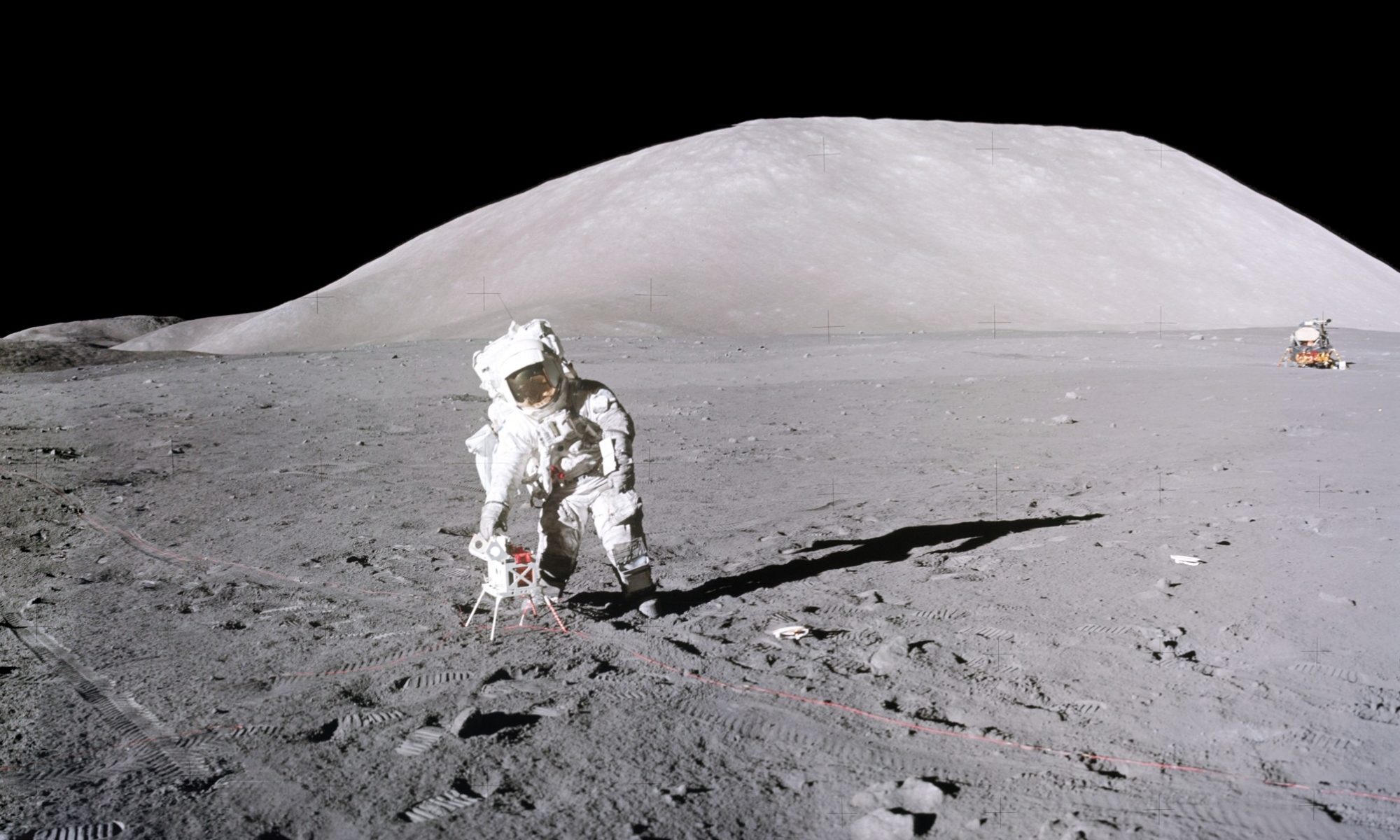 Photo of Professor Stuart Ross Taylor accompanying a Q&A interview on the Cambridge University Press FifteenEightyFour blog on 09/23/2012. (Copyright © Cambridge University Press, 2012).
Photo of Professor Stuart Ross Taylor accompanying a Q&A interview on the Cambridge University Press FifteenEightyFour blog on 09/23/2012. (Copyright © Cambridge University Press, 2012).
My first encounter with Ross Taylor would have been at the first Lunar Science Conference in January 1970. Ross had been responsible for the initial elemental analyses of the Apollo 11 lunar samples and played a critical part in the debates over the meaning of the new data flooding the lunar and planetary science community. Through succeeding years of interactions and a few beers at other lunar conferences, I never ceased to be amazed at Ross’s willingness to share his insights.
 Ross Taylor at the Canberra Deep Space Communication Centre, Tidbinbilla. On the right is the former Honeysuckle Creek (HSK) 26 m antenna which received the first television pictures of Neil Armstrong on the lunar surface. (ANU photo).
Ross Taylor at the Canberra Deep Space Communication Centre, Tidbinbilla. On the right is the former Honeysuckle Creek (HSK) 26 m antenna which received the first television pictures of Neil Armstrong on the lunar surface. (ANU photo).
Ross Taylor’s synthesis of the then available data about the Moon and planets, Planetary Science: A Lunar Perspective, published in 1982 (Lunar and Planetary Institute) continues to influence thinking in lunar science today. This book followed a 1974 publication, Lunar Science: A Post-Apollo View, in which Ross reviewed the initial results coming from analysis of Apollo lunar samples. The more comprehensive 1982 treatise, however, contains fundamental insights related to the application of lunar science to the history of the Earth and other planets, the interiors of the Moon and planets, the evolution of the lunar crust and mantle, and the evolution of the Solar System. Forty-plus years after Ross’s writing of this epic work, we still are maturing the basic hypotheses he reviewed.
 Ross Taylor with his old friend, the Spark Source Mass Spectrometer, at the Australian National University in Canberra, in May 1994. (Photo by Hamish Lindsay).
Ross Taylor with his old friend, the Spark Source Mass Spectrometer, at the Australian National University in Canberra, in May 1994. (Photo by Hamish Lindsay).
Teresa and I last visited with Ross at the Australian National University in Canberra, and were treated by him to a personal tour of the campus that included our first viewing of a full wall display of history’s first full-fledged geological map; that of England, published in 1815 by geologist William Smith. This huge map, one of fewer than 40 of its kind known to exist, is displayed in a large stairwell. Brilliantly colored, Smith’s map could not be more impressive, both visually and historically.
Ross Taylor’s friendship, intellect and intuition will be sorely missed. Our deep prayers go out to Noël, Susanna, Judith and Helen and to all who knew and benefited so greatly from his friendship and vast knowledge.
Copyright © by Harrison H. Schmitt, 2021, All rights reserved.
